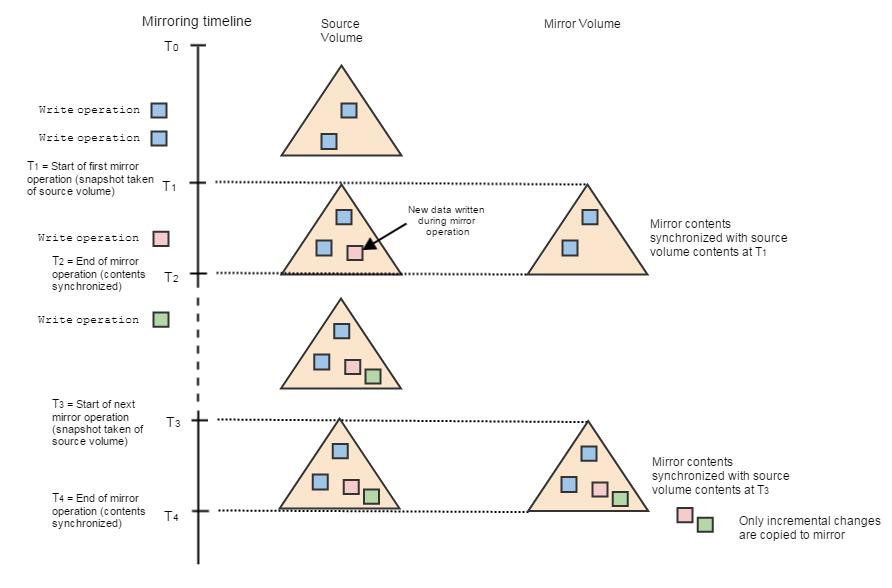Incorporating Mirror Volumes into a Disaster Recovery Plan
Lists the points to note when incorporating mirror volumes into a disaster recovery plan.
Mirroring critical data to a remote data center (with the ability to make mirror volumes into read-write volumes) addresses the following objectives:
-
Recovery Point Objective (RPO) - the age of the files you need to recover (and how much data you can afford to lose)
-
Recovery Time Objective (RTO) - how soon you need to have a working data center in order to maintain business continuity
In a typical scenario that employs remote mirrors, the contents of a source volume are mirrored to a mirror volume in a remote cluster at a frequency specified by the mirror schedule. At the start of each mirror operation, a snapshot is taken of the source volume's contents. The mirror operation takes some time to complete, and while the data is being copied from the snapshot to the mirror volume, more data is written to the source volume. This data will be captured during the next mirror operation. When each mirror operation completes, the contents of the mirror volume are identical to the contents of the source volume at the time of the snapshot. For subsequent mirror operations, only the incremental changes (additions and deletions) are copied to the mirror volume, which synchronizes its contents with the contents of the source volume at the time of the snapshot.

If the source cluster goes down, any data written to the source volume since the last successful mirror operation cannot be copied to the mirror. The amount of data lost depends on the number of write operations in the interval from the last successful mirror to the time the cluster goes down.